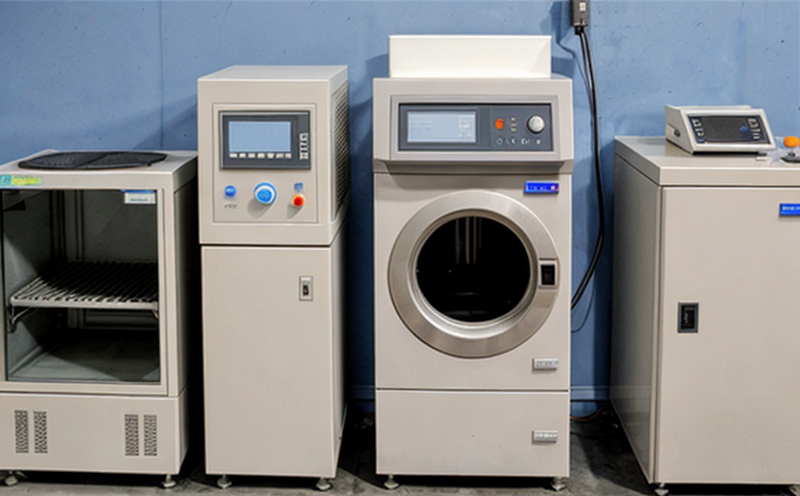EN 16192 Stability of Nanoparticle Dispersions in Environmental Samples
The European Standard EN 16192 specifies a method to determine the stability of nanoparticle dispersions in environmental samples. This standard is crucial for ensuring that nanoparticles remain dispersed and solubilized under various environmental conditions, which is critical for both health and ecological safety.
Nanoparticles can exhibit different behaviors depending on their dispersion state and the environmental matrix they interact with. EN 16192 provides a standardized approach to assess how these nanoparticles behave in real-world environments such as soil, water, or air. This stability testing is essential for industries involved in manufacturing, using, or disposing of nanomaterials.
The standard outlines several key parameters that need to be considered when conducting the test, including the type of environmental sample used, the method of nanoparticle preparation, and the conditions under which the dispersion is evaluated. The primary goal is to ensure that the nanoparticles do not aggregate, settle, or otherwise lose their dispersibility over time.
The testing procedure typically involves preparing a suspension of the nanoparticles in an appropriate environmental matrix. This matrix should closely mimic the actual environment where these nanoparticles might be found. Once prepared, the dispersion is then subjected to various conditions designed to simulate real-world scenarios, such as temperature fluctuations or exposure to light. The stability is assessed by measuring changes in nanoparticle size, concentration, and dispersibility over time.
This testing method is particularly important for industries dealing with nanotechnology applications in pharmaceuticals, cosmetics, electronics, and environmental remediation. In pharmaceuticals, for instance, the stability of nanoparticles in drug formulations can affect their efficacy and safety. In electronics, the behavior of nanoparticles in semiconductors can impact device performance. For environmental remediation, understanding nanoparticle stability in soil or water is crucial for effective cleanup strategies.
The standard also emphasizes the importance of accurate sample preparation, as improper handling can lead to misleading results. Proper techniques include ensuring that the nanoparticles are well-dispersed and that the environmental matrix is free from contaminants that could affect the test outcomes.
| Environmental Sample | Description |
|---|---|
| Soil | A complex mixture of minerals, organic matter, water, and air spaces. Soil can affect nanoparticle stability due to its diverse chemical composition. |
| Water | The most common environmental matrix for nanoparticles, where they can interact with various ions and compounds that may influence their behavior. |
| Air | Precipitation of nanoparticles in air can affect their dispersion stability due to varying humidity levels. |
The results from EN 16192 testing provide valuable insights into the environmental fate and behavior of nanoparticles, helping manufacturers and researchers make informed decisions about product design and safety. By adhering to this standard, organizations can ensure compliance with international regulations aimed at protecting human health and the environment.
Benefits
- Ensures regulatory compliance with international standards.
- Reduces risks associated with nanoparticle aggregation or settling in environmental samples.
- Promotes safer handling and disposal of nanomaterials by providing reliable stability data.
- Aids in the development of effective cleanup strategies for contaminated sites.
The benefits extend beyond compliance to include enhanced product quality, improved safety profiles, and more informed decision-making processes. By understanding how nanoparticles behave in environmental samples, organizations can optimize their products and processes, leading to better outcomes in terms of both performance and sustainability.
Eurolab Advantages
Eurolab offers unparalleled expertise in nanomaterial testing with a team of experienced scientists and engineers. Our state-of-the-art facilities are equipped with the latest instrumentation, ensuring accurate and reliable results. We pride ourselves on providing comprehensive support throughout the testing process, from sample preparation to final report delivery.
- Comprehensive understanding of European standards including EN 16192.
- Access to advanced analytical techniques for precise nanoparticle analysis.
- Dedicated project managers to guide you through every step of the testing process.
- Prompt turnaround times with no compromise on quality.
Choose Eurolab for your EN 16192 stability tests, and benefit from our commitment to excellence in nanomaterial testing.
Use Cases and Application Examples
- Pharmaceutical Industry: Ensuring nanoparticle stability in drug formulations for consistent efficacy and safety.
- Electronics Manufacturing: Evaluating the performance of nanoparticles in semiconductors under varying environmental conditions.
- Environmental Remediation: Assessing the behavior of nanoparticles used in contaminant removal processes to optimize effectiveness.
In pharmaceutical applications, EN 16192 testing helps ensure that nanoparticles remain dispersed and stable throughout their lifecycle, from production to administration. In electronics manufacturing, understanding nanoparticle stability is crucial for maintaining consistent performance across different environmental conditions. For environmental remediation projects, this testing provides critical data on how nanoparticles behave in contaminated soil or water.
| Use Case | Description |
|---|---|
| Pharmaceutical Stability | Evaluating the stability of nanoparticle-based drugs to ensure consistent efficacy and safety. |
| Electronics Performance | Assessing how nanoparticles in semiconductors behave under different environmental conditions for optimal performance. |
| Environmental Cleanup | Determining the effectiveness of nanoparticle-based remediation techniques in contaminated environments. |
These use cases highlight the versatility and importance of EN 16192 testing across various industries. By leveraging this standard, organizations can ensure that their nanomaterial products meet stringent quality and safety requirements while contributing to sustainable practices.





